AE 1015
Australia Hit by
Massive 5.9 Earthquake
Learn Australian English in this
new Aussie English podcast episode!

In today's episode...
Australia was hit by a huge 5.9 magnitude earthquake this morning. The biggest in history for the state of Victoria.
In today’s episode, I tell you about my experience as I felt the earthquake whilst sitting down with my family at breakfast.
The 2021 Australia earthquake had an epicentre located outside of Mansfield in Victoria.
The earthquake was feltin the cities of Melbourne, Adelaide, Sydney, Canberra, and Brisbane, and throughout Victoria, New South Wales, South Australia, ACT, and Queensland.
I also talk about how earthquakes occur, where they occur, why Australia has earthquakes, but not the huge devastating earthquakes like those that hit Japan, Chile, North America, etc. We also talk about how earthquakes are measured.
#Australia #australianearthquake #earthquakes
Improve your listening skills today – listen, play, & pause this episode – and start speaking like a native English speaker!

Watch & listen to the convo!
Listen to today's episode!
This is the FREE podcast player. You can fast-forward and rewind easily as well as slow down or speed up the audio to suit your level.
If you’d like to use the Premium Podcast Player as well as get the downloadable transcripts, audio files, and videos for episodes, you can get instant access by joining the Premium Podcast membership here.
Listen to today's episode!
Use the Premium Podcast Player below to listen and read at the same time.
You can fast-forward and rewind easily as well as slow down or speed up the audio to suit your level.
Transcript of AE 1015 - Australia Hit by Massive 5.9 Earthquake
Jesus. Earthquake! Earthquake! So, we've just had a 5.9 magnitude earthquake in Victoria, Australia, a very, very rare event and actually the largest or most powerful earthquake that I think has ever been recorded in Victoria, Australia. I was sitting there this morning having breakfast with my family and I thought, you know, I feel a bit light-headed. I feel like I'm moving around.
And I took a look around and I saw the lights on the roof were moving. I could hear- It felt like the windows had suddenly been hit with air or wind, it just suddenly come out of nowhere and they were rattling. And then I look down and the ground in the house- The ground in the House? The floor seemed to be moving below me, so I realised I wasn't stoned, I wasn't drunk, I wasn't high.
This time that it was an earthquake and I looked over at my wife and she was like, what the hell? Is it, you know, me too? Am I getting light-headed? Am I going to faint or something? And I was like, It's an earthquake, it's an earthquake. So, that was the first she ever experienced, and instead of being terrified, she was actually really excited and started screaming, oh my God, it's an earthquake. I can't believe it.
Re-enactment in three, two, one.
Oh my God, it's an earthquake.
She's from Brazil. She's never experienced one. This is by far in a way the biggest earthquake I've ever experienced. I would love for you to tell me down in the comments today. How did you experience the earthquake in Australia, if you were here?
It seems to have been felt everywhere from Adelaide, all throughout Victoria, throughout New South Wales, and I think even in Brisbane, we've had some friends there say they felt something as well. So, it was a very, very big earthquake. That's your cue Japanese friends to just say, hold my beer, Pete. The only other earthquake I've ever experienced was in Melbourne.
A few years back, when I was studying my PhD, I was living in North Melbourne, and I thought that some huge animal had run across the top of the house. I was just like, what the hell is this? But the whole thing was shaking, so I quickly realised it wasn't a possum. That's because I was busy. Anyway, it's been an interesting day. There was a little bit of damage done to some older buildings on Chapel Street in Prahran in Melbourne.
But besides that, I don't think there have been any injuries and definitely no deaths that I've heard of yet, so it's been really interesting. Leave a comment below and tell me, where were you this morning when you felt it? Was it the first time you've ever experienced an earthquake? What was your sort of sensation? When did you realise that it was an earthquake?
But if it's, too...
Besides that, I thought that we could talk a bit about earthquakes and geology in Australia. So, I had to brush up on my first-year geology and seismology skills today, but I thought we could go through some articles that I've opened up here. We can talk about earthquakes in Australia. Why, where, how they're happening. We can talk about how they're measured and how they occur.
So, I thought this would be really, really interesting. So, here's an article from ABC.net.au, A really good news site that you can check out down under. Earthquakes in Australia, how big do they get and how prepared are we?
Most of us tend to associate earthquakes with places like New Zealand, California or Japan, and you'll see that here at the top of the article, this is an image from New Zealand where the road has been all sort of concertinaed up. No, I didn't make that up. "To concertina something" is actually a verb. And the bitumen has all these huge cracks in it from obviously an earthquake.
So, these locations lie on the edge of tectonic plates, where the stress of plates pushing against one another causes rocks deep within the Earth to suddenly break and split past one another, resulting in an earthquake. But what about earthquakes in Australia?
Yeah, so many of you may not realise that besides places like New Zealand, California and Japan, which I believe lie on the fault zones or the areas between tectonic plates, where they're meeting, Australia doesn't actually sit on the boundary of tectonic plates.
We're kind of smack bang in the middle of a tectonic plate. And so, it's pretty weird for you to hear about big earthquakes in Australia. They do happen, though, obviously, as evidenced by today's 5.8 magnitude earthquake, which I think was re estimated to be 5.9. So, Trevor Allen is a seismologist with Geoscience Australia who works on determining the likelihood of catastrophic earthquakes affecting Australian communities.
As Australia sits in the centre of a tectonic plate, our earthquakes are a bit different to other places. Dr Allen uses the analogy of a pavlova, this is that New Zealand, Australian cake that has meringue in it and cream and everything.
He uses that as an analogy for earthquakes in Australia. Qoute, "Imagine, if you will, that a tectonic plate is analogous to a pavlova, with a thin, brittle crust lying above a ductile but mostly solid meringue mantle", almost poetic. "The Australian continent would sit in the middle of our pavlova.
If you put your hands on the edges of the pavlova and start to squeeze, the crust around your hands will be the first thing to break like those earthquakes at the boundaries of tectonic plates." So, these are the ones that happens in places like, as you'll see in the image here, New Zealand or throughout Southeast Asia, Japan, California.
"But if you continue to squeeze eventually strain builds up to the centre of the crust and cracks will begin to appear. This is similar to how we get earthquakes in Australia. The same forces that drive earthquakes on tectonic plate boundaries are at play, they just take a lot longer to manifest in the middle of our pavlova."
It's kind of interesting to see how, depending on your location in relationship to tectonic plates, these different earthquakes are going to have different rates of occurrence and different magnitudes. So, we'll get into it a bit later, but you'll find throughout history in Australia here, at least modern history. We've never had an earthquake above, I think 7 on the magnitude scale, I think we use the moment magnitude scale.
But let's get into the way that we measure earthquakes. So, once upon a time, we used what was called the Richter scale, and this was a logarithmic scale used to measure seismology, right, the movement that is caused by earthquakes. However, this was outdated and changed in the 1970s and replaced by the moment magnitude scale. And I believe that was because the moment magnitude scale could measure much larger and much smaller earthquakes.
So, here's an article from Michigan Tech. The first widely used method, the Richter Scale, was developed by Charles F. Richter in 1934. It used a formula based on the amplitude of the largest wave recorded on a specific type of seismometer and the distance between the earthquake and the seismometer.
The scale was specific to Californian earthquakes and crust. Other scales based on wave amplitudes and total earthquake duration were developed for use in other situations, and they were designed to be consistent with Richter's scale.
So, as a result of this scale not being perfect and not being able to be applied worldwide, they ended up creating a new one called the moment magnitude scale, and there's probably a few others that I don't know about as well.
But the moment magnitude scale is the main one that we use now, and despite us having changed in the 1970s from the Richter scale to the moment magnitude scale, you'll still hear the media always talk about the Richter scale, and even the layman like me will just use Richter scale because we were so used to hearing it for so long. So, how does the moment magnitude scale work?
Moment is a product of the distance a fault moved, and the force required to move it. It is derived from modelling recordings of the earthquake at multiple stations. Moment magnitude estimates are about the same as Richter magnitudes for small to large earthquakes, but only the moment magnitude is capable of measuring M8, read magnitude eight earthquakes and greater events accurately.
Magnitudes are based on a logarithmic scale of base 10. So, this means that if you get an earthquake of magnitude one, it is 10 times weaker than an earthquake of magnitude two. So, each time you go up the scale by a unit of one on this logarithmic scale, the next number means that that earthquake is 10 times more powerful than the previous one.
So, a magnitude five is ten times bigger or stronger or more powerful than a magnitude four, and if you go up to magnitude eight, it's, you know, thousands of times stronger than a magnitude five or four. There was a really interesting point here.
So, to give you an idea of how these numbers can add up, think of it in terms of energy released by explosives, a magnitude one seismic wave releases as much energy as blowing up six ounces of TNT, right, dynamite. Six ounces, so that would be, you know, that would be able to fit into my beer here, whereas a magnitude eight earthquake releases as much energy as detonating six million tons of TNT. Isn't that insane?
Fortunately, most earthquakes that occur each year are too small to be felt by most people. Let's also talk about the Mercalli scale. Another way to measure the strength of an earthquake is to use the observations of people who experience the earthquake and the amount of damage that occurred to estimate its intensity. The Mercalli scale was designed to do just that.
The original scale was invented by Giuseppe Mercalli in 1902 and was modified by Harry Wood and Frank Neumann in 1931 to become what is now known as the modified Mercalli intensity scale. To help distinguish it from magnitude scales, the modified Mercalli intensity scale uses Roman numerals.
So, if we jump over to the Wikipedia page here for Richter magnitude scale and we scrolled down to the Richter magnitudes here, we've got a table on the screen here with different columns. Magnitude, description, Mercalli intensity and then average earthquake effects.
And so, with magnitude, whether it's Richter or the moment one, this is where you'll get that number of 1, 2, 5.9 like today. You'll then get a description as well, so between 1 and 1.9 is a micro earthquake, between 2 and 3.9 is minor, 4 and 4.9 is light, 5 to 5.9 is moderate, 6 to 6.9 is strong, 7 to 7.9 is major and 8 to 9 or more is great.
And then the Mercalli intensity scale is Roman numerals going up there from one, it's obviously sort of similar in terms of the number, which is why they use the Roman numeral scale. But a magnitude of one is Mercalli intensity scale of one, two is one to two, a magnitude of three is three to four, a magnitude of five is five to seven, etc. You can see how it sort of goes up.
And there's obviously a bit of variation there, depending on the damage that's done. So, if we go to the average earthquake effects, a magnitude of one, Mercalli intensity scale of one is a micro earthquake that is not felt or rarely felt and is still recorded by seismographs.
And then if we go all the way up to say an 8 to 8.9, this is major damage to buildings, structures likely to be destroyed, will cause moderate to heavy damage to sturdy or earthquake resistant buildings, damage in large areas felt in extremely large regions and we get one per year.
And that was the other interesting thing that I wanted to talk about, the average frequency of occurrence globally of each of these different magnitude earthquakes. So, the lower the magnitude, the higher the rate that those earthquakes are actually going to happen. So, if it is a magnitude one, they're much more frequent and you're going to have millions of these per year globally.
Whereas if you get to magnitude four, for example, here, when we go across, we'll have 10 to 15,000 of these globally per year. And then if we get above seven to eight, that's 10 to 20 per year. 8 to 8.9 is one per year, and then nine or more is 1 per 10 to 50 years. So, it's interesting to see that these are kind of on an inverse log scale and you guys better with maths will be able to sort of correct my terminology here.
But you see that the intensity of the earthquake as it increases, the much lower the frequency that that earthquake is likely to occur. So, really small earthquakes, millions of them a year, really, really big ones, one a year, maybe one every decade or five decades. And we've got another graph here.
So, this is an interesting graph showing this magnitude and logarithmic scale here, going from one to above ten, and it's got some of these earthquakes listed on the graph here with Chile 1960 at what looks like nine and a half on the magnitude scale, and obviously that's one of the biggest ones on record. So, we don't have anything on this graph, at least that went above 10.
And the crazy thing is the amount of energy released in that Chile earthquake. If we go to the energy equivalents on the right-hand side of the graph here, it's more than the Krakatoa eruption, and it's more than ten times the world's largest nuclear test. It's just insane, right.
And the world's largest nuclear test is bigger than the Mount St. Helens eruption, which is that eruption that took place in the US, where this mountain, this volcano effectively just disintegrated. Killed lots and lots of people. But that was- It's actually caught on film. It's insane. Alright, so we sort of talked about how these earthquakes occur in Australia.
We've talked about how they're measured today using the moment magnitude scale instead of the Richter scale. We've got the Mercalli intensity scale to measure the damage that's actually done irrespective of the power of the earthquake. Let's talk a little bit more about geology. I love this stuff. I haven't thought about it for a long time, but when I was at Uni, I absolutely loved this stuff in geology.
Okay, so there are three different types of interactions. You're going to have divergent interactions where the plates are pulling away from one another, and so any time you're ending up with this force building up at this zone, the force is going to be pushing outwards. Then you've got convergence where they're obviously converging, right, they're coming at one another. And you've got transform, where they're moving side to side.
So, one might be moving faster than the other and they're rubbing against one another. The interesting thing is that when they're convergent and they're coming at one another, one of these plates has to go below the other one, and this is called the subduction zone.
And where they're rubbing against one another, this is the subduction interface and the reason that you end up with really powerful earthquakes at these areas of subduction and probably the transform as well. Again, geologists feel free to correct me. Is because that friction is building up where these two plates are being pushed one above the other one.
And so, the plate is effectively getting stuck, pressure and power is building up behind it. And when it's released and it slides, that subduction interface, it slides one below the other, one above the other. You end up with a lot of energy being released, and this is what ends up causing things like earthquakes. So, to finish off, let's go through a little article here from USGS.gov.
And this article is called 'The Science of Earthquakes'. I'll read out a bit of this. What's an earthquake? An earthquake is what happens when two blocks of the Earth suddenly slip past one another. The surface where they slip is called the fault or fault plane. The location below the Earth's surface, where the earthquake starts, is called the hypocentre.
And the location directly above it on the surface of the Earth is called the epicentre. So, that's really interesting. Today in Victoria, the epicentre of the earthquake that took place was actually above where the earthquake actually occurred. It was in Mansfield, I believe, outside of Melbourne, sort of in sort of the Highland- Central Highlands of Victoria.
And the hypocentre is where it actually occurred, which was about 10 kilometres below the Earth's surface. Sometimes an earthquake has foreshocks, these are smaller earthquakes that happen in the same place as the larger earthquake that follows. Scientists can't tell that an earthquake is a foreshock until the larger earthquake happens. The largest main earthquake is called the main shock.
Main shocks always have aftershocks that follow, these are smaller earthquakes that occur afterwards in the same place as the main shock. Depending on the size of the main shock, aftershocks can continue for weeks, months and even years after the main shock. That's really interesting. I was actually reading about the largest earthquake that's ever-taken place in Australia, which on the moment scale here looks to be between 6.3 and 6.7.
This took place in the Northern Territory at Tennant Creek back in 1988, and even today there are aftershocks taking place, right, where obviously the seismometers that are being used by geologists can measure that there are still earthquakes taking place years and years and years later, right, three decades after the fact. So, what causes an earthquake and where do they happen? Let's just rehash it quickly.
The Earth has four major layers the inner core, outer core, mantle and crust. The crust and the top of the mantle make up a thin skin on the surface of our planet, but the skin is not all in one piece. And I guess you can think again about multiple pavlova cakes sitting next to one another. It's made up of many pieces, like a puzzle covering the surface of the Earth.
But these puzzle pieces keep slowly moving around, sliding past one another and bumping into each other. We call these puzzle pieces tectonic plates, and the edges of these plates are called plate boundaries. The plate boundaries are made up of many faults and most of the earthquakes around the world occur on these faults. Since the edges of the plates are rough, they get stuck while the rest of the plate keeps moving.
Finally, when the plate has moved far enough, the edges unstick on one of the faults and there's an earthquake. So, that's what we were talking about before with those three different types of plate interactions. Where it's divergence, they can move away from one another.
Convergence where they can move towards one another, and you end up with that subduction zone. Or transform where they're moving past one another, right, they're sort of rubbing shoulders, if you will, but going in opposite directions.
And so, there's a really interesting image here that I recommend you guys check out in this video where you can see the plates of the world and you'll be able to see in the bottom left corner here that the Australian continent is smack bang in the middle of the Australian tectonic plate.
And so, if you look to the east of Australia to New Zealand, you'll see that the Pacific Plate and the Australian plate actually cross through the middle of New Zealand effectively, which is why they have such awesome skiing on that mountain range. But it's also why they end up with so many earthquakes. I mean, you guys all know the story about Christchurch, they're still repairing, right.
So, why does the Earth shake when there is an earthquake? While the edges of faults are stuck together and the rest of the block is moving, the energy that would normally cause the blocks to slide past one another is being stored up. Potential energy. When the force of the moving blocks finally overcomes the friction of the jagged edges of the fault, and it unsticks, all that stored up energy is released.
The energy radiates outward from the fault in all directions in the form of seismic waves like ripples on a pond. The seismic waves shake the Earth as they move through it, and when the waves reach the Earth's surface, they shake the ground and anything on it, like our houses as well as us. And it's interesting, if you go down here, there are two main types of these seismic waves.
So, you'll see the image here. P waves, which are horizontal waves that compress the Earth and S waves which happen on a vertical plane more like, say, a wave in the ocean. So, I'll read it out here so that you get the actual definitions. P waves alternately compress and stretch the crustal material parallel to the direction that they are propagating.
S waves cause the crustal material to move back and forth perpendicular to the direction they are travelling. Lastly, let's talk about megathrust earthquakes. So, the largest earthquakes happen when one plate collides and slips under another, this is a megathrust earthquake or collides with and slips past another, slip-strike earthquake. So, I think that's subduction zone versus transform zone.
You're not going to get huge earthquakes where they're divergent plate edges moving away from one another. Megathrust quakes can be some of the largest quakes that we've seen. These include the magnitude 9.1 Sumatra earthquake in 2004, which triggered a series of tsunamis that hit coastlines across the Indian Ocean and killed at least 230,000 people.
And the magnitude 9 Japanese earthquake in 2011 that also generated a large tsunami and led to the meltdown of three reactors at the Fukushima power plant. They occur when the plates collide and lock together, forcing one plate below the other. Slip-strike earthquakes, a separate type of earthquake is caused by a transform fault, also known as a strike-slip fault.
Well, is it slip-strike or strike-slip? Which involves two plates sliding past one another rather than pulling away or pushing together. The most common example of this is the San Andreas fault, where the Pacific plate is moving northwards relative to the North American plate at a rate of about five centimetres a year.
He said, slip-strike earthquakes can be very large up to magnitude 8 and leave plates ten metres away horizontally from where they previously stood. So, that's another weird thing that we could talk about, if you've got like a house or a location on one side or another. I wonder if the GPS locations change after an earthquake. I wonder if your house moves in respect to your GPS location.
So, yeah. Anyway, that's about it. To finish up, let's have a look at some of the earthquakes that have happened in Australia. So, yeah, the biggest one that we've had is 6.7 magnitude. We've had two of those in Western Australia and Northern Territory, and these happened in 1970 and 1988, respectively. And then everything else has obviously been below 6.7.
So, we've had a whole bunch in Western Australia, some in South Australia, all in the 6.1 to 6.5 zone. We've had one in 1902 at a 6 in South Australia and Queensland, and then they're all obviously below that. But there's quite a few, there's probably 50 or so here listed. We've only lost 2, 13, 15 people to earthquakes in Australia, and it looks like we've only ever had a few hundred injuries from these different earthquakes.
And I think the worst earthquake that we've ever had was the Newcastle earthquake in 1989 that caused $4 billion in damage and led to 13 people dying and 160 people being injured. So, interestingly, this is an example where the Mercalli scale is a seven, despite the magnitude of the earthquake being a 5.6. So, obviously because of the carnage that the earthquake caused. That's probably long enough for today, guys.
Hopefully you enjoyed this episode. Learned a bit about geology. Again, if I've made any mistakes here, feel free to correct my arse in the comments below. And also, let me know of your experiences with earthquakes in the comments. Have you experienced the Australian earthquake that just took place as of today?
Have you experienced something way worse, way larger or way more powerful in your home country or other countries that you visited? Let's keep the discussion going there, and if you want to learn more about Australia, check out this video here. See you next time.

Listen & Read with the Premium Podcast Player
Get more out of every episode!

Premium Podcast members get access to...
- All 900+ podcast episodes including member-only episodes
- Member-only episode video lessons
- Downloadable transcript PDFs & audio files for every episode

Recent Episodes:


AE 1299 – Pete’s 2c: Do You Ring, Call, or Dial Someone on the Phone in Australia?

AE 1298 – Learn English with a Short Story: Day at the Beach

AE 1297 – The Goss: How ‘Dropping In’ Culture Has Changed in Australia

AE 1296 – The Goss: Gorilla Glasses & Dad’s Crazy Zoo Stories – MEMBERS ONLY

AE 1295 – The Goss: Australia’s Most & Least Ethical Jobs

AE 1294 – The Goss: Australia Just Had the Best Aurora in 500 Years!

AE 1293 – The Goss: Should Aussie Schools Ban Homework?

AE 1292 – How Aussie Do Asian Australians Feel? r_AskAnAustralian

Share

Join my 5-Day FREE English Course!
Complete this 5-day course and learn how to study effectively with podcasts in order to level up your English quickly whilst having fun!

Join my 5-Day FREE English Course!
Complete this 5-day course and learn how to study effectively with podcasts in order to level up your English quickly whilst having fun!


Have you got the Aussie English app?
Listen to all your favourite episodes of the Aussie English Podcast on the official AE app.
Download it for FREE below!


Want to improve a specific area of your English quickly and enjoyably?
Check out my series of Aussie English Courses.
English pronunciation, use of phrasal verbs, spoken English, and listening skills!

Have you got the Aussie English app?
Listen to all your favourite episodes of the Aussie English Podcast on the official AE app.
Download it for FREE below!



Want to improve a specific area of your English quickly and enjoyably?
Check out my series of Aussie English Courses.
English pronunciation, use of phrasal verbs, spoken English, and listening skills!
Leave a comment below & practice your English!




Responses